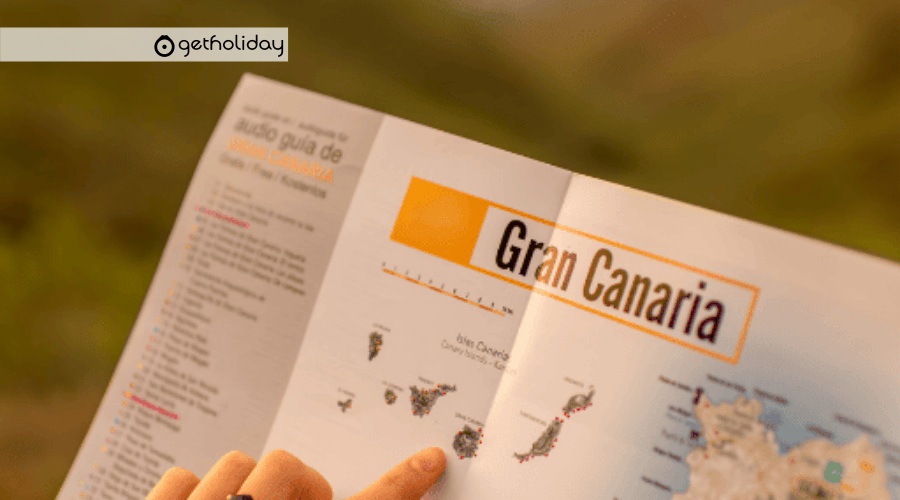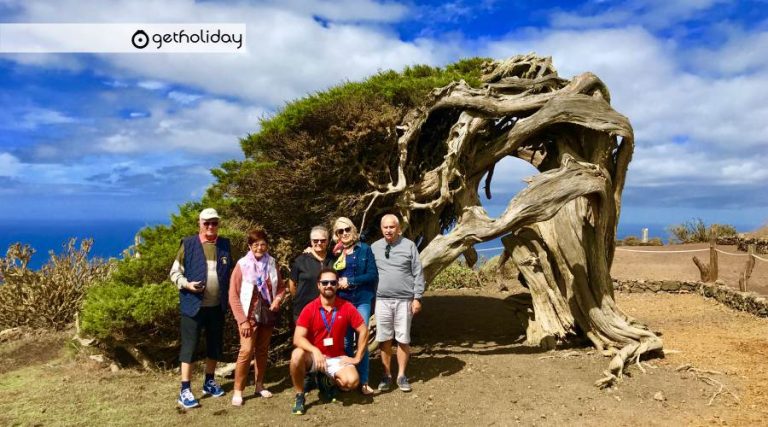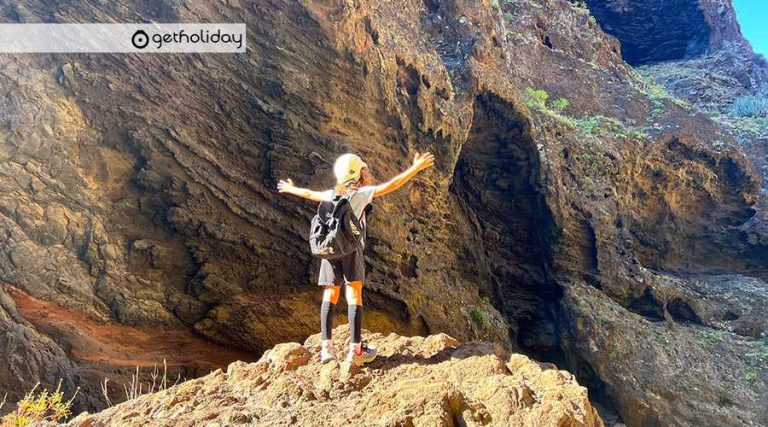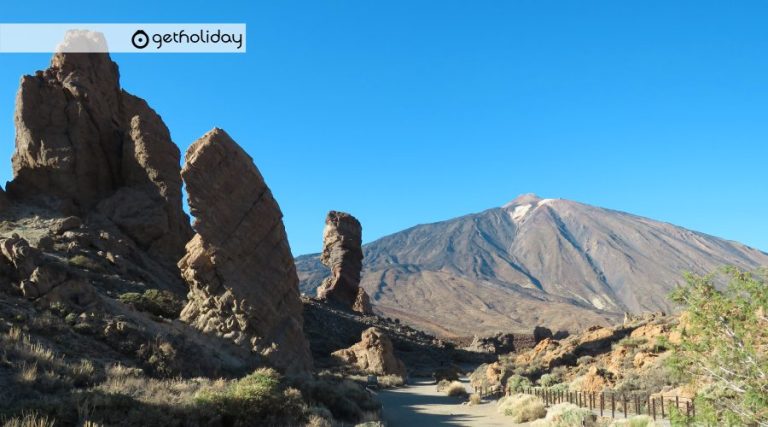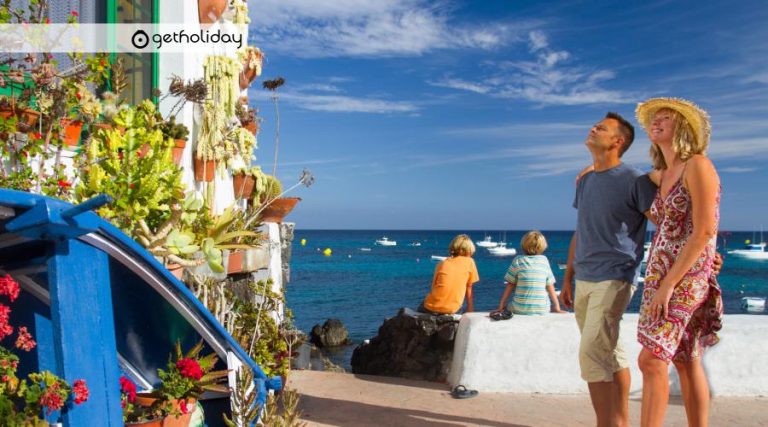Protected Natural Areas of interest in Gran Canaria
Despite its small area, Gran Canaria has a natural heritage of enormous value. The uniqueness of its ecosystems, its fauna, its flora and its geology, has prompted several Spanish and international administrations to guarantee its conservation.
It has 33 protected areas and they are:
- 2 Tamadaba and Pilancones Natural Parks
- 2 Nublo and Doramas rural parks
- 2 Integral Nature Reserves of Inagua and the Dark Ravine
- 10 Natural Monuments of the Amagro Massif, the Bandama caldera, Montañon Negro, Aguayro, Tauro, Arinaga, Guayadeque Ravine, Tirajana Riffs, Roque Nublo, Draguillo Ravine.
- 7 Protected landscapes of La Isleta, Pino Santo, Tafira, Las Cumbres, Lomo Magullo, Fataga, Montaña de Aguimes.
- 4 Sites of scientific interest in Jinámar, Tufia, Roque de Gando, Juancalillo del Sur.
- 6 Special Nature Reserves of El Brezal, Azuaje, Los Tilos de Moya, Las Dunas de Maspalomas, Guigui, Los Marteles.
DESTINATIONS, PRODUCTS AND TOURIST RESOURCES OF GRAN CANARIA
Gran Canaria is one of the main islands in terms of the absorption of tourism in the archipelago, therefore, tourism is the most developed sector on the island.
LAS PALMAS DE GRAN CANARIA, a city in which there is a great commercial activity and an important influx of tourists, famous for its beaches, highlighting Las Canteras Beach, one of the longest urban beaches in the Atlantic, also protected by a volcanic tube that slows down waves. Next to the port is the Plaza de Santa Catalina, a must-see for tourists.
The Vegueta neighborhood occupies a prominent place in the cultural tour of this city. Nearby is the famous Plaza de Santa Ana and the Cathedral (its style recalls the architecture of the time of the conquest). Also nearby is the Casa de Colón, which recalls the passage of the navigator.
The Triana neighborhood has a commercial nature, we highlight here the Pérez Galdó Theater and the so-called Pueblo Canario (architectural complex with a large interior patio, Canarian balconies and native vegetation). The Canarian Museum houses abundant pieces and aboriginal remains.
Other places of interest: Atlantic Center of Modern Art (conferences and temporary exhibitions of painting and sculpture), San Telmo Park, Plaza de l Feria, Literary Cabinet, Castillo de la Luz, ….
As a popular festival, Carnival stands out with its multiple events: election of the Queen of Carnival, Murgas Contests and various parades (playful-festive tourism).
In this area, activities related to cultural tourism (historical-heritage, shopping in the Triana area) and sun and beach tourism are mainly developed.
AGAETE
Population settled at the foot of imposing crags and cliffs. It is an area rich in prehistoric sites (cultural tourism) From its famous seaport, Puerto de las Nieves, you can see the broken rock known as “God’s Finger” which fell in 2005 due to hurricane delta.
The hermitage of Nta. Mrs. De Las Nieves, declared a historical-artistic monument, constitutes one of the most interesting visits. Also noteworthy is the Balneario de los Berrazales with a spring of medicinal waters (health tourism).
As for festivals, we can distinguish the traditional “Bajada de la Rama” (I remember the aboriginal tradition of going with branches from the mountain to the sea – whipping the waters and asking for the rains to descend) (ethnic tourism).
AGUIMES
Important municipality from the historical point of view; abundant caves and aboriginal sites stand out, in addition to the cave engravings in the Barranco de Balos (cultural tourism) This town has beautiful typical houses, such as the Episcopal Palace.
ARTENARA
Municipality of great historical interest; It has various archaeological remains, among which we can highlight Las Cuevas del Caballero (cultural tourism). Artenara is also distinguished by its Canarian pine forests and its cliffs, especially the one known as “Andén Verde” (ecological tourism).
ARUCAS
Its urban area is a must for its buildings and layout. The famous Cathedral of Arucas and the rest of the buildings are built in blue stone from nearby quarries (cultural tourism).
The Arucas Mountain and its viewpoint offer the possibility of admiring incredible landscapes (rural tourism – hiking,…) The Hesperides Garden, the Rum Museum and the Gourié Mansion (municipal museum) stand out.
GÁLDAR
A town with a rich aboriginal historical past. It preserves several archaeological remains such as La Cueva Pintada, the towns of El Agujero and the Royal Tumulus of La Guancha (cultural tourism).
There is also what is known as La Necrópolis de Gáldar, which is the most monumental archaeological complex in the Canary Islands, located on the Playa de el Agujero.
Also noteworthy is the Church of Gáldar, which houses the Pila Verde, the place where the aboriginal nobles were baptized after the conquest.
MOGAN
It is a place of aboriginal archaeological remains, such as those in the Tauro Alto area (cultural tourism). This municipality is also famous for its black sand beaches, such as Playa de Mogán (Puerto de Mogán) and for its tourist complex known as Puerto Rico (sun and beach tourism – sports tourism such as sailing, golf, diving sports).
It is a town that is mainly dedicated to tourism, especially sun and beach tourism.
MOYA
It has an important wooded area known as the Tiles, where there is a very important population of laurel forest (ecological tourism).
SAN BARTOLOME DE TIRAJANA
Important tourist municipality where the presence of the Maspalomas Dunes and its famous beaches (Maspalomas, Playa del Inglés and San Agustín) stand out (sun and beach tourism – sports tourism such as sailing, golf, diving sports). The archaeological remains are also important, such as those of the Barranco de Fataga (cultural tourism). It must be remembered that Pinar de Tirajana has a special botanical wealth (ecological tourism).
SANTA LUCIA DE TIRAJANA
Highlight its Archaeological Museum “La Fortaleza” (cultural tourism). Pozo Izquierdo beach is located on the coast, where windsurfing competitions (sports tourism) are held.
SAINT MARY OF GUIDE
This town is home to one of the most important archaeological gems on the island: the “Cenobio de Valerón”, which was an aboriginal granary (cultural tourism). Its abundant caves in the Barranco de San Felipe are also very famous.
TEJEDA
With an impressive landscape, with valleys and cliffs, in which the Roque Nublo and the Roque de Bentayga (rural tourism – ecological tourism) stand out. In the upper area is the Parador Nacional de Tejeda. As a popular festival, point out the “Fiesta del Almendro”, counting on the elaboration of typical desserts with almonds (cultural tourism).
TELDE
Telde is the second most important city on the island. The international airport of Gando is located in this municipality and as a cultural tourist attraction, aboriginal vestiges such as “Cuatro Puertas” are preserved. The Barrio de San Francisco is one of the oldest urban centers in the archipelago (cultural tourism).
TERROR
Here is located the Basilica that welcomes the patron saint of the island, the Virgen del Pino. The Pilgrimage in her honor, marks the life of this town as it receives the visit of thousands of pilgrims (cultural-religious, historical-heritage, ethnic tourism).
It is worth noting the presence of a Nature Classroom of the Cabildo in the Casa de los Osorio (ecological tourism).
VEGA DE SAN MATEO
One of its attractions is the “Cho Zacarías” House Museum, it is a farmer’s house full of agricultural utensils (cultural tourism). Its livestock fair is also relevant since it is a mainly livestock municipality.
Among the different tourist products that we can develop in Gran Canaria, sun and beach and sports activities (linked to the sea), cultural activities of various kinds, and as a new and thriving option we find rural tourism activities (in frank expansion, fundamentally in the areas of the midlands or the interior of the island).
The main tourist destinations are located in the southern part of the island -within the municipalities of San Bartolomé de Tirajana and Mogán- (Maspalomas, Playa del Inglés, San Agustín, Puerto Nido, Puerto de Mogán) and in the island capital -Las Palmas.
TRANSPORT AND COMMUNICATIONS.
The island of Gran Canaria has a good road network that connects the different population centers, although there are certain difficulties in the area of ravines and cliffs.
There is a motorway from Las Palmas to Maspalomas and, in addition, a motorway has been built to the north, for which it has been necessary to build several bridges that have managed to solve the turns, curves and narrowness of the old roads.
In general, it can be said that the island of Gran Canaria is well connected by land. Previously, the rugged western area was crossed by small boats, which communicated the different little ports and which have given way to road traffic after the construction of the new roads.
Currently, in addition to multiple fishing and sports ports, Gran Canaria has a huge seaport, parallel to Las Canteras beach on the Isleta, known as El Puerto de la Luz. It is the port that generates and supports more traffic and movement of the archipelago and is also considered one of the most important in the Atlantic.
As for means of transport, there is good and fast communication between the islands thanks to the abundant number of ferries and fast-ferries. We must also highlight the existence of another important seaport located in the municipality of Agaete and known as Puerto de Las Nieves.
Regarding communication by air, Gran Canaria has an international airport located next to the Montaña de Gando.
ACCOMMODATION.
Gran Canaria has an extensive hotel and non-hotel offer spread throughout the island, although there are areas where there is a tendency to concentration and an example of this is the city of Las Palmas, Agaete and Maspalomas.
In Gran Canaria you can find all kinds of accommodation, from a hostel to a large super-luxury hotel that offers all kinds of services of the highest level.
We hope you have enjoyed this article about the Natural Protected Areas of interest in Gran Canaria and other parts of the island. You can read more about the island in this article about the history and geography of Gran Canaria.

